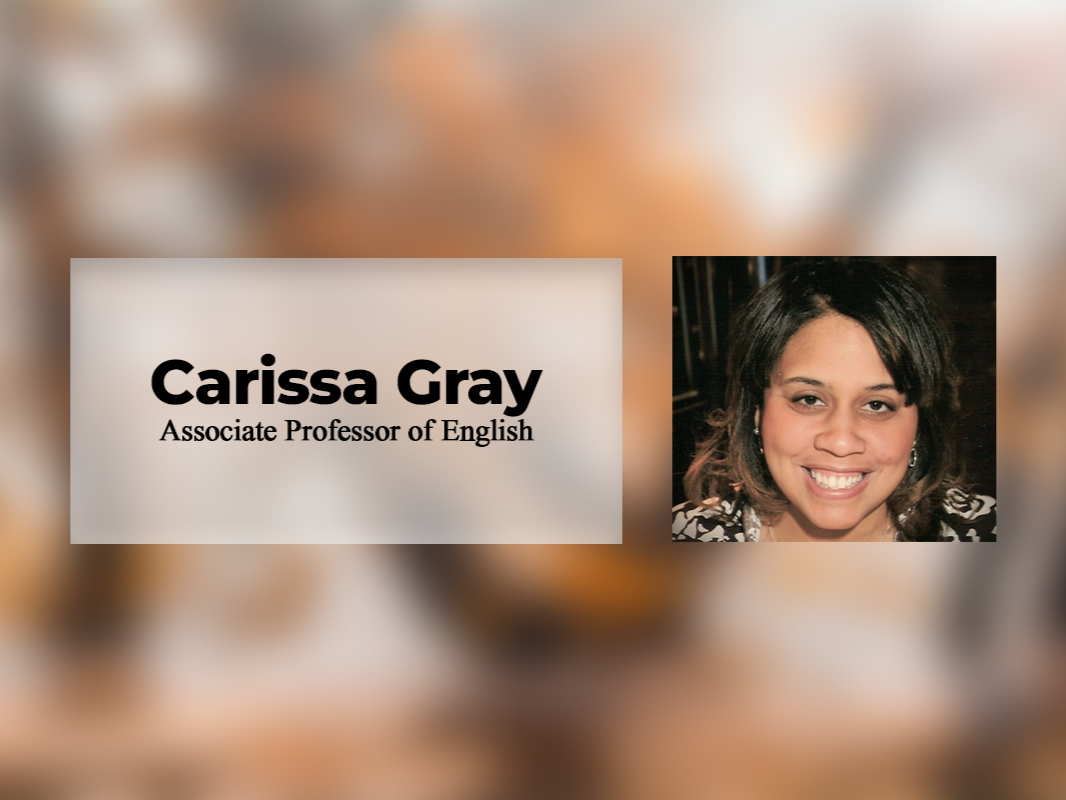Self-Consciousness and Whitespace
Interrupting Gardner’s REM-Sleep: Self-Consciousness and Whitespace in Contemporary Fiction

“Whatever the genre may be, fiction does its work by creating a dream in the reader’s mind. We may observe, first, that if the effect of the dream is to be powerful, the dream must probably be vivid and continuous” (Gardner 31).
In “The Art of Fiction: Notes on Craft for Young Writers,” John Gardner suggests that good fiction—through vibrant and realistic details—draws the reader into a dream-like experience, an experience that goes beyond words on the page. He challenges writers to sustain this level of intensity throughout the work because “one of the chief mistakes a writer can make is to allow or force the reader’s mind to be distracted, even momentarily, from the fictional dream” (33). In essence, readers should see the story, not the words. Gardner’s advice motivates apprentice writers to focus on making stories so believable, or making their lies so laughable, that readers engage with the fiction “heart and soul” (31).
To follow the metaphor through, however, Gardner’s ideal reader is asleep, having been lulled into a REM-state, temporarily suspending (22) reality in order to engage in the narrative. REM is the deepest stage of sleep and ideal for reading fiction because “the brain and body are energized and dreaming occurs. REM is thought to be involved in the process of storing memories, learning, and balancing . . . mood (NIH). Hence, writers who create a “vivid and continuous dream” create the best fiction.
On the other hand, some contemporary writers rely heavily on the readers’ narrative cognizance. These writers want the best of both worlds: to craft fiction that causes dreamy readers to experience stories on intellectual, emotional, and metaphysical levels; and also to craft fiction that calls attention to its own art and process. Through highly self-conscious prose and flagrant manipulation of whitespace, writers, like Italo Calvino, Mary Robinson, and Mohsin Hamid, shake their readers out of the dream.
First of all, the writers mentioned above rouse their readers by crafting self-conscious prose or, what John Gardner classifies as, “metafiction,” that is, when writers “make a point of interrupting the fictional dream” (32). In other words, reading metafiction is like taking a dose of literary NoDoz. According to Wladimir Krysinksi, metafiction can be defined as:
fiction whose primary concern is to express the novelist’s vision of
experience by exploring the process of its own making. The definition indicates that only those works are considered metafiction where the novelist has a message to convey and is not merely displaying his technical brilliance. (Krysinski 187)
In other words, a work can be characterized as metafiction if it explores craft in-process and if it relays a message beyond the text. Even though Invisible Cities, Why Did I Ever, and How to Get Filthy Rich in Rising Asia could all be loosely referred to as metafiction, two of these works are more successful at relaying a message meaningful enough to distract readers from REM-sleep.
Who wants to be awakened out of a vivid, continuous dream, except for good reason? Well, Calvino’s Invisible Cities is a good reason. The novel stirs the reader with its poetry-like prose; there is no apparent plot, and the characters do not, necessarily, develop. More than that, though, Invisible Cities works because it is built on the metaphysical conceit of mapping a dream (Vrbančić 1). Calvino explains his process and his conceit: “The book in which I think I managed to say most remains Invisible Cities, because I was able to concentrate all my reflections, experiments, and conjectures on a single symbol” (quoted in Vrbančić 6). In other words, Calvino, as a writer of metafiction, has something to say beyond the book, beyond the narrative, beyond the dream. This is in contrast to Gardner’s notion that reader’s need not be conscious of reality because reality only interferes with the dream. Calvino, however, does not intend to take that experience away from readers; he wants them to continuously go in and out of the dream—to be cognizant of the story, as well as its art. Gardner, however, characterizes this technique as “for[cing] the readers mind” (32) to distraction, but Calvino maintains that he is in control of the narrative, but his readers should be conscious and in control of their own minds.
In addition, contemporary writers use whitespace to interrupt readers’ dreams. These necessary interruptions point to the metafictive message of the work. Instead of incorporating physical whitespaces on the page, Calvino refers to metaphorical spaces related to storytelling and memory. Note where Kublai Khan reflects on Marco Polo’s travel tales: “But what enhanced for Kublai every event or piece of news by his inarticulate informer was the space that remained around it, a void not filled with words” (38). In metafiction, the reader must wake up and do some work, that is, come out of the dream to see the story from the outside in. Calvino’s readers must first see the words on the page and, second, ruminate on the whitespaces, considering what he has omitted and why.
Compare Invisible Cities to Mary Robison’s Why Did I Ever. Both works satisfy Krysinski’s criteria that true metafiction expresses the author’s vision by explaining the process. Robison’s process is quite different from Calvino’s. She reveals how
she took to the practice of writing small sections of text on thousands of notecards, attempting to establish not a plot or string of scenes, but little mechanical pieces that each held up solely on their own. Later, then, the bits were assembled, and placed in an order.
Indeed, Robison challenges the traditional way novels are conceived, drafted, and structured. However, Why Did I Ever is self-conscious for self-consciousness’s sake, gimmicky, even to the point of slapstick comedy. To be clear, the message is missing, and in this sense, message does not mean theme. Any blog or newspaper article can have a theme. Why Did I Ever certainly has its share—from rage, to motherhood, to violence, to Hollywood, to addiction. The novel does not lack for theme. However, it does lack, what Gardner refers to as, artistic comment (33). Readers would rather be dreaming than awake, so Robison should make the reason for the rousing apparent. Her abrupt, almost slap-in-your-face, vignettes try too hard to be clever, coming off as cleverly contrived. Here is an example: “Now he and I are watching some men with a ball. No matter the shape or size of the ball, what team or for what country the men fight. The TV is showing men with a ball so we’re watching” (8). Krysinski would say that Robison is putting her brilliance on display here and denying the reader access to the message. It goes without saying: no reader wants to be taken out of his REM-state to learn that the narrator-bedfellow is watching a basketball game. In traditional narratives, moments like this may be threaded into a greater work in a way that readers can gather meaning from the context. However, Why Did I Ever is fragmented, and this basketball moment is a stand-alone chapter. Therefore, Robison’s vignettes masquerade as metafiction, and the reader is hard-pressed to find a metafictive comment, must less a metaficitive message. In the end, though, Robison does make a different kind of comment, “Look what I can get away with.” Unfortunately, apprentice writers may hit the snooze button, for good reason.
Unlike Calvino’s figurative whitespaces, Robison incessantly uses physical whitespaces in attempts to interrupt the dream. No doubt, many of them are impactful; they resonate with meaning, especially whitespaces after Paulie’s sections. Here is one such section: “He would tie Paulie up and hang him some way or other. Take him down and rape him. Hang him up and take him down” (137). Whitespace: resonance. On the other hand, readers are trained to pause and reflect at white spaces, so by the sheer number of Robison’s vignettes, some of them may take on more meaning than they actually have. Consider this one: “I have purchased a soft pretzel and I am eating that as I await my ground transportation .
. . I say to myself, ‘How smart is this?’” (68). Whitespace: no resonance. How smart is it, really, to distract the reader with news that the narrator is waiting for the train, and then over-emphasize the pretzel moment with whitespace. It is Robison’s burden, after all, to justify the whitespace in Why Did I Ever because she has structured the narrative this way, structured it to be considered experimental metafiction. Readers should not, thus, be asked to take the vignettes and whitespace at face value.
Seemingly, then, Robison shirks her metafictive commentator responsibilities, while Calvino takes his role very seriously. He understands the role of the reader:
I constantly play cat and mouse with the reader, letting the reader briefly enjoy the illusion that he’s free for a little while, that he’s in control. And then I quickly take the rug out from under him; he realises with a shock that he’s not in control, that it is always I, Calvino, who is in total control of the situation. (Calvino quoted in Carter 11)
What Gardner calls a dream in “Art of Fiction,” Calvino refers to as illusion. Calvino illustrates how he shakes the reader from the vivid and continuous dream by pulling a rug from underneath him (pulling the covers off) so that the reader awakens to the fact that Calvino’s writing process is power play. Gardner argues that writers, like Calvino, “[distract] the reader—breaks the film, if you will—when by some slip of technique or egoistic intrusion he allows or forces the reader to stop thinking about the story (stop ‘seeing’ the story) and think about something else” (32). Quite possibly, Calvino would accept the idea that his narrative power play is a consequence of his ego. He does not allow his readers to get lost in the dream or to draw any conclusion other than this: Invisible Cities is metafiction, and Calvino must wake his readers up, if only to find pleasure in the idea that he can.
On the other hand, Robison relies on comedic affect and her readers’ good graces to pull Why Did I Ever off:
Robison said in an interview with Bomb, describing the brain state in which the mood of the book came out of. So I was scrapping around for any tiny thing I could do and had the thought, 'Make the story really funny; all else will be forgiven.’ (Butler)
This dismissive attitude comes through in the novel, and apprentice writers who try to glean something useful from Why Did I Ever could certainly learn not to fear taking risks. However, the harder lesson is that young writers should not start a novel by making apologies. They should not use whitespace to create the sensation of impact.
What exactly needs to be forgiven in Why Did I Ever? Is the novel just a drawn-out gimmick, a test to see how far humor and wit could take it? A statement by Robison’s protagonist, indeed, represents the overall tone of Why Did I Ever: "F*** you. Why should you get to know where I'm going, I don't” (qtd. in Butler). While Calvino remains in constant control on a metafictive level, it can be argued that, for this novel, Robison is not in control of her own process. Thus, To young writers, her novel may read like a contemporary f*** you. Whitespace: resonance.
Finally, Mohsin Hamid’s How to Get Rich in Rising Asia is entirely self-conscious. Unlike Calvino, whose prose-style calls attention to itself, Hamid composes metafiction by writing a stylized self-help book. And unlike Robinson, whose whitespaces are mostly blank spaces on a page, Hamid uses metaphorical whitespace to comment on the creative process. How to Get Rich in Rising Asia is more like a traditional novel, but because he crosses over into the self-help genre, he is able to use point of view to convey a metafictive message and to manipulate whitespace in a meaningful way.
Through the use of second-person point of view, Hamid creates a metafictive, multi-dimensional you; in fact there are at least three distinct you’s in the novel. First, the narrator, is speaking to you, the reader: “You read a self-help book so someone who isn’t yourself can help you, that someone being the author. This line is addressed to anyone who reads self-help books. Then, the narrator speaks to you, the protagonist: “Its objective, as it says on the cover, is to show you how to get filthy rich in rising Asia. And to do that it has to find you, huddled, shivering, on the packed earth under your mother’s cot one cold, dewy morning (5). Finally, the narrator functions as a meta-narrator, speaking from outside the book to offer critique on the self-help genre itself: “To be effective, a self-help book requires too things. First, the help it suggests should be helpful. Obviously. And second, without which the first is impossible, the self it’s trying to help should have some idea of what help is needed” (77). By using this point of view technique, Hamid gives his readers access to the vivid and continuous dream—the protagonist’s story; at the same time, he comments on the process and the art of storytelling.
Because Hamid’s narrative follows a traditional plot development, the novel epitomizes how Gardner characterizes new works:
[A writer ] may cross genres . . . If he is looking for novelty (seldom for
any more noble reason), he may try to borrow structure from some
other art, using film, theatrical movement, or something else. When new forms arise, as they do from time to time, they rise out of one of two processes, genre-crossing or the elevation of popular culture. (19)
Hamid tackles both processes: he crosses literary fiction over to the self-help genre, and then he elevates this clichéd form of popular psychology. He also satisfies Gardner’s mandate for vibrant details and realistic action. Because of the traditional plot and character development, Hamid’s readers, no doubt, enter a REM-state. Nevertheless, while Hamid’s dream may be vivid, it is certainly not continuous. He interrupts his reader’s dream with a disorientating second person point of view and frames the novel with a jarring self-help tone. Much like Calvino, Hamid is in complete control of the narrative, the dream, and the message. Both writers choose, at will, to grant their readers ingress and regress.
Nevertheless, Hamid’s whitespace transcends Robison’s blankness, as well as Calvino’s egoist intrusions. As a metafiction writer, he conflates the three yous into one universal you at the end of his novel, demonstrating how metafiction and empty space should really work. This type of conflation cannot be accomplished in Gardner’s REM-state. Ultimately, for contemporary writers, like Hamid, great fiction encompasses the dream; it encompasses the waking sensation; it encompasses the interpretation of the dream. It is an all-encompassing experience:
and you are ready to die like a man, like a woman, like a human . . . you have been beyond yourself, and so you have courage, and you have dignity, and you have calmness in the face of terror, and awe . . . and you contain her, and this book, and me writing it, and I too contain you, who may not yet even be born, you inside me and me inside you. (222)
Works Cited
Butler, Blake. Underappreciate Masterpieces: Mary Robison’s Why Did I Ever.
2015: Vice.com. Web. 6 April 2017.
Calvino, Italo. Invisible Cities. Orlando: Harcourt, 1972. Print.
Gardner, John. The Art of Fiction: Notes on Craft for Young Writers. New York: Random
House, 1991.
Hamid, Mohsin. How to Get Filthy Rich in Rising Asia. New York: Riverhead Books,
2013. Print.
Krysinksi, Wladminir. “Borges, Calvino, Eco: The Philosophies of Metafiction.” Literary
Philosophers. ED. Jorge J.E. Gracia. New York: Routledge, 2002. Web. 26 April
2017.
NIH. “What is REM Sleep?” Eunice Kennedy Shriver National Institute of Child Health
and Human Development. nd. 26 April 2017.
Robinson, Mary. Why Did I Ever. Washington, D.C.: Counterpoint, 2001. Print.
Vrbančić, Mario. “A Dream 0f the Perfect Map—Calvino’s Invisible Cities.” The Zones
and Zones – Radical Spatiality in our Times 2.2 (2002): 1-29. Web. 26 April
2017.








